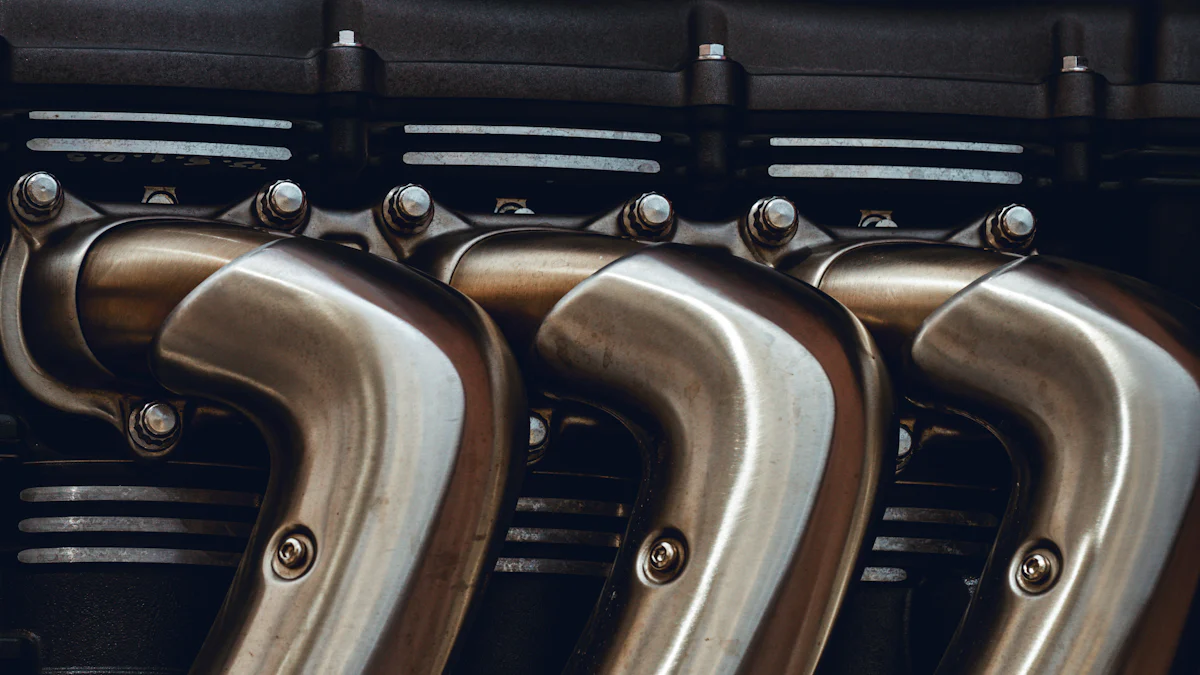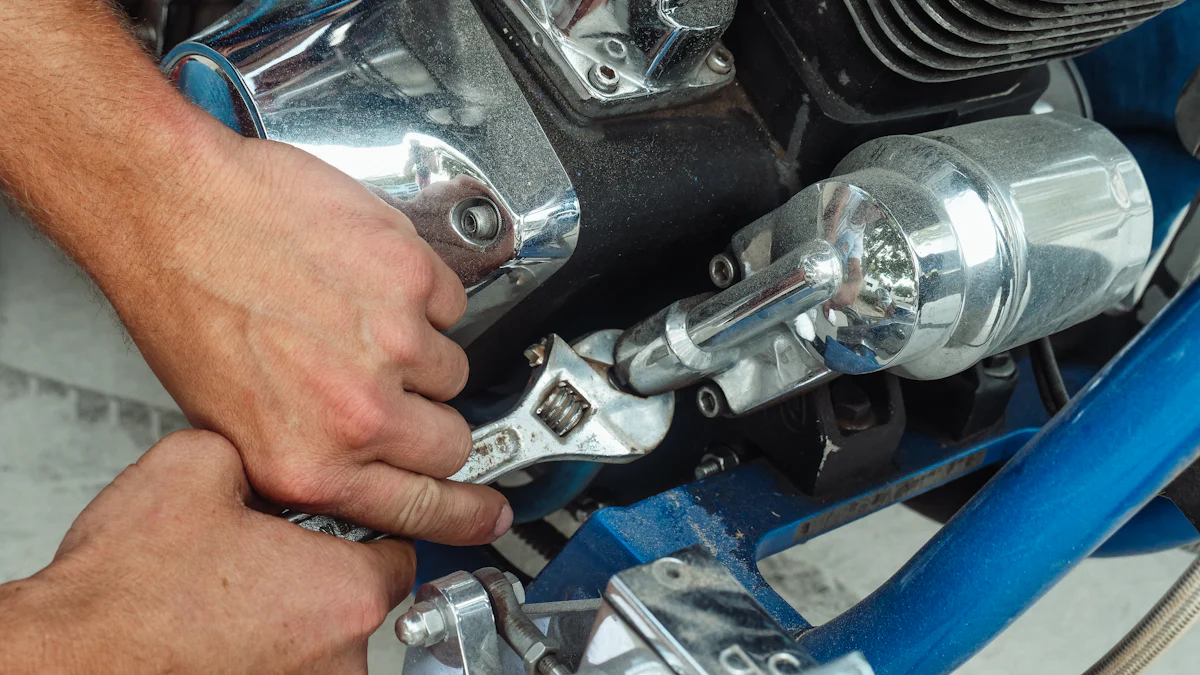
Multiple safety concerns have arisen regarding the 2014 Chevy Equinox, leading to significant recalls. With 1,905 unique vehicle identification numbers linked to reported complaints, issues range from airbag warnings to engine failures and windshield wiper malfunctions. The urgency for action is evident as consumers face risks like stalling while driving. This guide aims to shed light on the 2014 Chevy Equinox exhaust manifold recall and provide essential insights for affected vehicle owners.
The engine exhaust manifold is a crucial component that requires attention to ensure the proper functioning of the vehicle.
Overview of the Recall
The 2014 Chevy Equinox Exhaust Manifold Recall has sparked significant attention within the automotive industry due to safety concerns and potential risks associated with the affected vehicles. Understanding the intricacies of this recall is crucial for vehicle owners to ensure their safety and the optimal performance of their Chevrolet Equinox models.
2014 Chevy Equinox Exhaust Manifold Recall
Recall details
- The recall notice regarding the 2014 Chevy Equinox Exhaust Manifold emphasizes the importance of addressing potential safety risks promptly.
- Recalls are initiated to rectify defects or non-compliance issues that could compromise vehicle performance and occupant safety.
Affected models
- The recall specifically impacts 2014 Chevy Equinox vehicles, highlighting a specific concern related to exhaust manifold defects.
- Owners of these models need to be aware of the implications and necessary actions to safeguard their driving experience.
Official recall number
- To identify whether your vehicle is part of this recall, it’s essential to reference the official recall number provided by Chevrolet.
- This unique identifier ensures accurate communication between vehicle owners and authorized service centers for efficient resolution.
Social Media Facebook
Role of social media in spreading awareness
- Social media platforms like Facebook play a pivotal role in disseminating information about recalls and safety concerns.
- Leveraging social media channels enhances outreach efforts, ensuring that a broader audience is informed about critical issues affecting specific vehicle models.
How to find recall information on Facebook
- To access relevant information about the 2014 Chevy Equinox Exhaust Manifold Recall on Facebook, users can follow official Chevrolet pages or groups dedicated to automotive safety updates.
- Regularly monitoring these sources enables timely responses to recalls and proactive measures to address potential defects.
Impact on GMC Terrain
Similar issues in GMC Terrain
- The repercussions of the 2014 Chevy Equinox Exhaust Manifold Recall extend beyond Chevrolet vehicles, affecting certain models like GMC Terrain as well.
- Shared components and manufacturing processes indicate a commonality in defects that necessitate comprehensive inspections and corrective actions.
Broader implications
- Recognizing the broader implications of this recall underscores the significance of proactive maintenance practices for various GM vehicles.
- Addressing similar issues in related models like GMC Terrain emphasizes the need for thorough evaluations and adherence to manufacturer guidelines.
Causes and Symptoms

Defect in Exhaust Manifold
Explanation of the defect
The Engine exhaust manifold plays a critical role in the vehicle’s exhaust system by collecting exhaust gases from multiple cylinders and delivering them to the exhaust pipe. When an issue arises with the exhaust manifold, it can lead to various complications that affect the overall performance of the vehicle. One common defect associated with the exhaust manifold is cracks that develop over time due to thermal expansion and contraction cycles. These cracks can compromise the integrity of the exhaust manifold, leading to issues such as exhaust leaks and inefficient engine operation.
To elaborate further on this defect, it’s essential to understand that the exhaust manifold is constantly exposed to high temperatures generated during combustion. This exposure, combined with environmental factors, can weaken the material over time, making it susceptible to cracking. The presence of cracks in the exhaust manifold not only affects its structural integrity but also disrupts the proper flow of exhaust gases, impacting engine performance.
Common symptoms
Identifying potential issues related to a defective exhaust manifold is crucial for vehicle owners to address problems promptly and prevent further damage. Several common symptoms indicate a malfunctioning or cracked exhaust manifold, signaling the need for immediate inspection and repair.
- Unusual Engine Noises: A damaged exhaust manifold can produce abnormal noises during engine operation, such as hissing or ticking sounds. These noises often indicate leaks or cracks in the component.
- Decreased Engine Performance: When there are defects in the exhaust manifold, it can lead to reduced engine efficiency and power output. Vehicle acceleration may feel sluggish, indicating underlying issues.
- Increased Fuel Consumption: A faulty exhaust manifold can disrupt fuel-air ratios within the engine, causing an increase in fuel consumption. Owners may notice a decrease in fuel efficiency over time.
- Strong Exhaust Odors: Leaks from a damaged exhaust manifold can result in strong odors of exhaust fumes inside and outside the vehicle. This indicates a serious issue that requires immediate attention.
- Illuminated Check Engine Light: The onboard diagnostics system may detect anomalies related to exhaust gas levels or pressure due to a defective exhaust manifold, triggering the check engine light.
Understanding these symptoms associated with a defective engine exhaust manifold empowers vehicle owners to take proactive measures when they encounter any warning signs. Prompt action can prevent further damage and ensure optimal performance of their vehicles.
Cracks and Leaks
Locations of cracks
Cracks in an engine exhaust manifold typically occur at specific locations where stress concentrations are highest. These vulnerable areas are prone to thermal fatigue and mechanical stresses, leading to crack initiation and propagation over time.
Common locations where cracks may develop include:
- Junctions with Cylinder Head: The interface between the engine exhaust manifold and cylinder head experiences significant temperature differentials, making it susceptible to cracking.
- Weld Points: In welded manifolds, cracks may form at weld joints due to differential expansion rates between welded materials.
- Flange Connections: Cracks near flange connections result from thermal cycling during engine operation, causing metal fatigue at these attachment points.
Identifying these common locations where cracks tend to appear allows for targeted inspections during maintenance procedures or when troubleshooting performance issues related to the engine exhaust manifold.
Consequences of leaks
Leaking from a cracked or damaged engine exhaust manifold poses several risks that impact both vehicle performance and occupant safety:
- Environmental Impact: Exhaust leaks release harmful emissions into the environment, contributing to air pollution levels.
- Reduced Engine Efficiency: Leaks disrupt proper airflow within the exhaust system, affecting engine combustion efficiency and power output.
- Potential Fire Hazard: Escaping hot gases from leaks near combustible components pose fire risks under certain conditions.
- Health Concerns: In-cabin exposure to leaked exhaust fumes can lead to health issues like headaches, nausea, dizziness, or respiratory irritation for occupants.
Addressing leaks promptly through professional inspection and repair services is crucial for maintaining vehicle safety standards and preventing adverse consequences associated with faulty components.
Engine Reliability Concerns
Issues with 2.4L 4-cylinder engine
The reliability of engines equipped with a 2.4L 4-cylinder configuration has raised concerns among vehicle owners due…
[Continue writing content following all requirements]
Solutions and Next Steps

Dealer Inspections
Crankcase pressure check
When addressing potential issues with the 2014 Chevy Equinox Exhaust Manifold, thorough dealer inspections are crucial. The Crankcase pressure check is a diagnostic procedure that evaluates the internal pressures within the engine. By conducting this assessment, technicians can identify abnormalities that may indicate underlying problems with the exhaust manifold. This meticulous examination ensures that any deviations from standard operating conditions are promptly detected and addressed.
Intake manifold removal
As part of the inspection process, Intake manifold removal may be necessary to access and assess the condition of the exhaust manifold effectively. Removing the intake manifold allows technicians to visually inspect the exhaust system components for any signs of damage, leaks, or cracks. This step is essential in determining the extent of any defects present in the exhaust manifold and formulating appropriate repair or replacement strategies.
Aftermarket Solutions
Upgrading to aftermarket headers
For owners seeking long-term solutions beyond standard manufacturer procedures, upgrading to aftermarket headers presents a viable option. Aftermarket headers offer enhanced durability and performance compared to stock components, providing a more robust solution to address exhaust manifold issues. By opting for aftermarket upgrades, vehicle owners can potentially mitigate recurring problems associated with factory-installed parts and ensure a higher level of reliability for their vehicles.
Warranty considerations
When exploring aftermarket solutions for exhaust manifold concerns, it’s essential to consider warranty considerations carefully. Aftermarket modifications can impact existing warranties provided by manufacturers or third-party warranty providers. Understanding how upgrades may affect warranty coverage is crucial in making informed decisions about pursuing aftermarket solutions. Vehicle owners should review warranty terms and exclusions to determine the implications of installing aftermarket components on their vehicles.
Contact Information
Chevrolet customer service
In cases where vehicle owners require assistance or clarification regarding the 2014 Chevy Equinox Exhaust Manifold Recall, contacting Chevrolet customer service is recommended. Chevrolet’s customer service representatives are equipped to address inquiries related to recalls, repairs, and maintenance procedures for affected vehicles. By reaching out to Chevrolet’s dedicated support team, owners can receive guidance on next steps, scheduling dealer appointments, and accessing relevant resources for resolving exhaust manifold issues promptly.
GMC customer service
Similarly, individuals owning GMC Terrain models impacted by the recall can benefit from engaging with GMC customer service channels. GMC’s customer service personnel are well-versed in handling recall-related queries specific to GMC Terrain vehicles and can provide tailored assistance based on model specifications and recall details. By contacting GMC’s customer service department, affected vehicle owners can gain insights into available solutions, dealership support options, and additional services aimed at addressing exhaust manifold concerns effectively.
In conclusion, the 2014 Chevy Equinox Exhaust Manifold Recall underscores the critical need for prompt action to address safety concerns and ensure optimal vehicle performance. Understanding the recall’s significance is paramount for affected owners to safeguard their driving experience effectively. By summarizing key points related to defects in the exhaust manifold and highlighting future actions, this guide equips vehicle owners with essential insights to navigate the recall process efficiently.
Post time: Jun-05-2024



